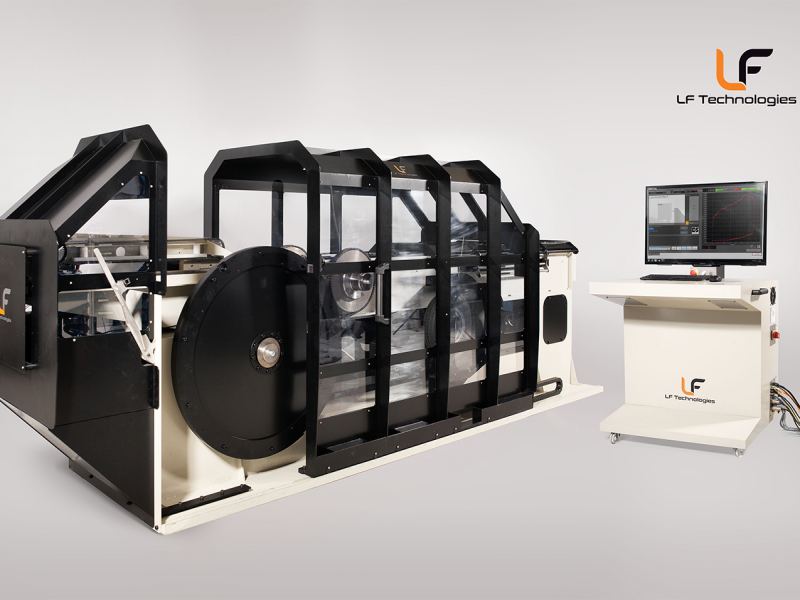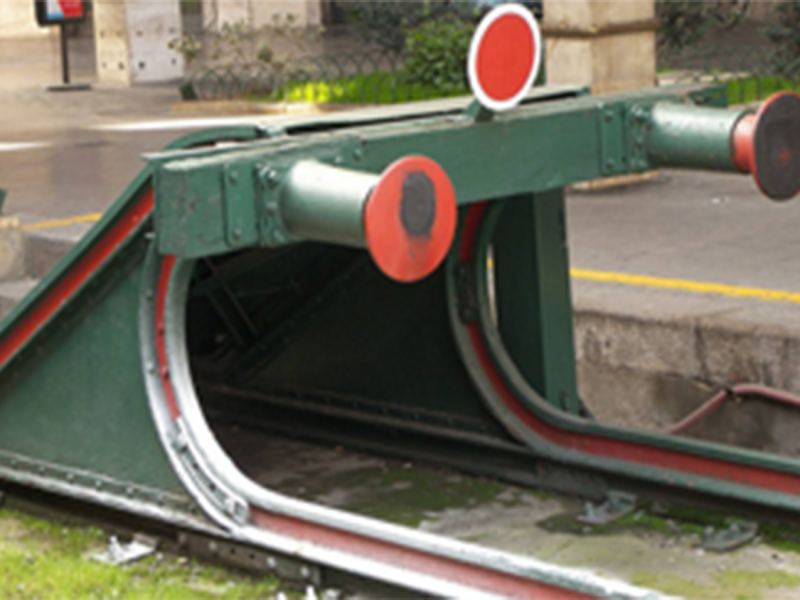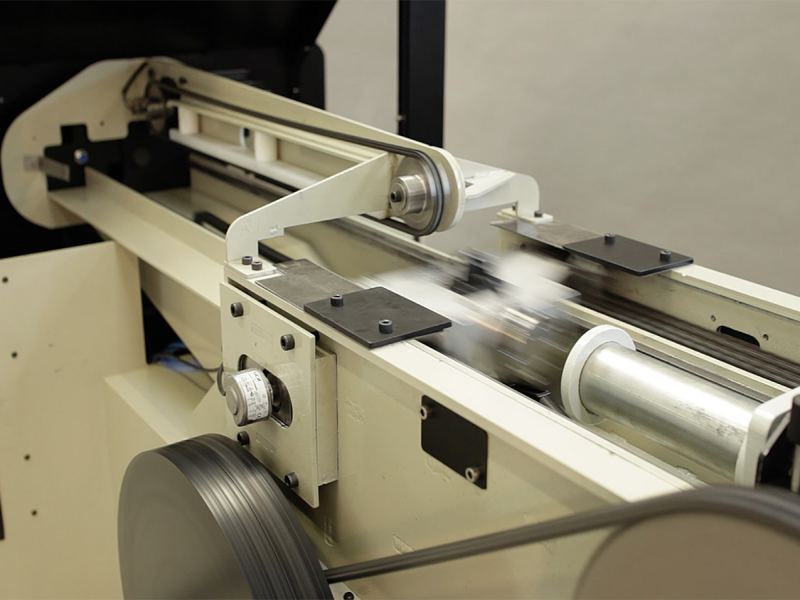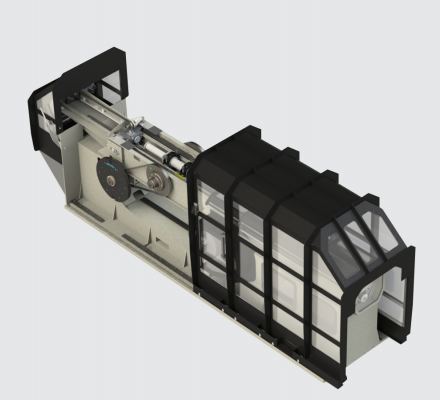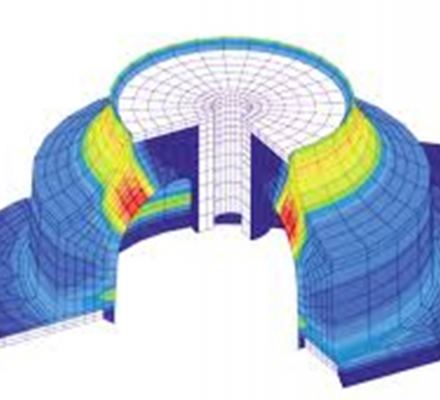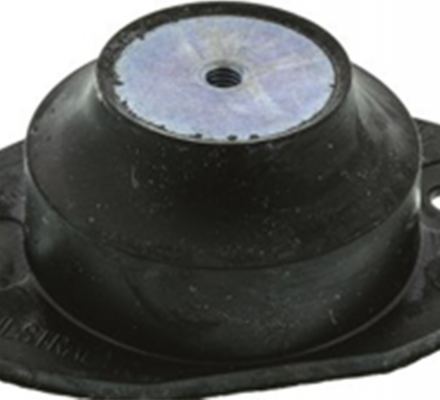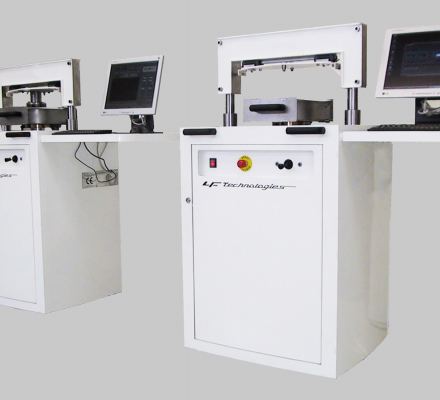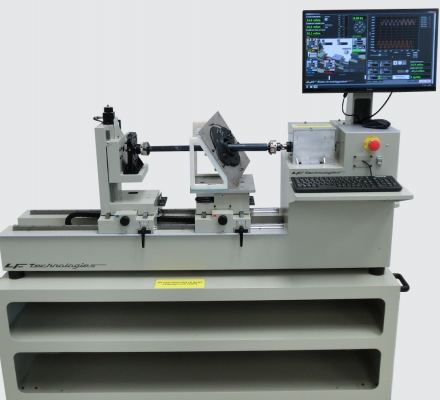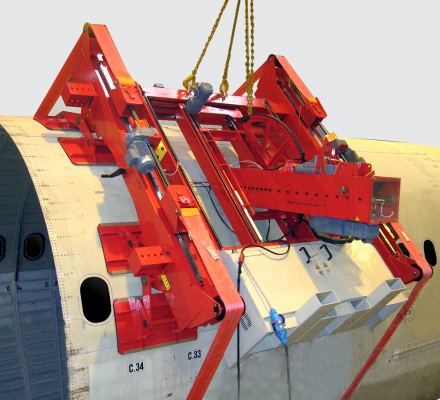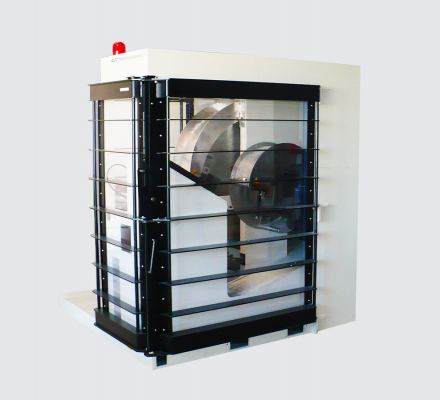Customer
Our client designs and manufacture protections against shocks. The company came to us looking for a bench to test their products’ shock resistance.
Tested product
Shock absorber
It is a mechanical system that reduces the violence of an inertial shock. The shock energy is absorbed by the shock absorber, without rebound.
Depending on the application, these shock absorbers are designed according to the speed and the mass to be braked.
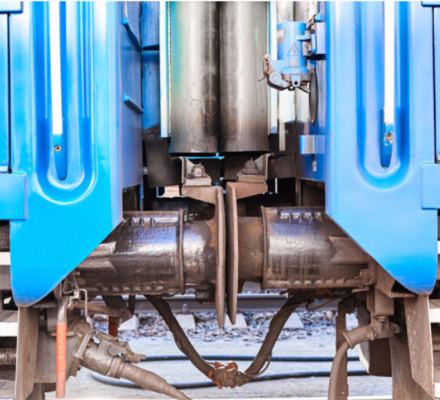
Objective
The behaviour of these products is tested on a static bench and must also be tested at high speed (impact test), as the shock absorber's reaction depends on the impact speed. Since the reaction force of the shock absorber is a consequence of speed and mass, the test can only be carried out by an "inertial" system, i.e. an adjustable mass propelled at a controlled speed. During the impact phase, the movement of the mass against the shock absorber shall be passive, with no external energy input.
The only existing solutions are: a mobile cart on a slope or a cart propelled by explosives.
Problematic issues
- Simulation of the movement of highly variable masses launched at different speeds without the use of large masses.
- Protection of the machine in the event of a test of a faulty device
Solution and result
LF Technologies has designed and built a dynamic shock simulation bench up to 50,000 J, with adjustable mass and speed, allowing to simulate from 50 kg to 200 T from 0.5 m/s to 10 m/s.
The bench consists of a frame on which slide a striker and a static stop on which the shock absorbers under test are supported.
The static stop is equipped with an automatic locking system that limits the maximum impact force to an adjustable force of 10 to 150 kN.
The shock absorbers to be tested are mounted in tools which can also slide in the frame.
The striker is propelled by chains on the shock absorber to be tested. These chains are driven by wheels equipped with interchangeable flywheels and motorized by a disengageable system.
It is the inertia of the flywheels and their mounting position (direct drive or via a gearbox) that determine the simulated mass.
Thanks to this dynamic shock simulation bench, our customer can simulate the damping of a very large mass, where previously it was necessary to use a wagon loaded with ballast weighing several tens of tons on a sloping railway track!


